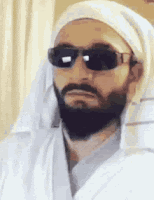You may be surprised to learn that your home movies can hold great interest for a much wider public, including local historians, international scholars, and artists. Popular celebrities or historic events that appear in your films would be obvious examples, but in fact it is the record of normal human beings being themselves in everyday circumstances that may be of most historical value.
I am a Dutch amateurfilmer and homevideo-enthusiast, as well as producer, director, editor of "C'est le Toon". This video-blog is a communication-tool sharing news, documentaries, family videos, interviews, travelogues, visual arts and filmmaking. It also contains tips about and examples of how-to make interesting homevideos, travelogues, ipodsfilms vacationfilms and vodcasts etc. Search the site for worldwide video's and movies! Enjoy.
08 januari 2015
Mix carnavalesque
You may be surprised to learn that your home movies can hold great interest for a much wider public, including local historians, international scholars, and artists. Popular celebrities or historic events that appear in your films would be obvious examples, but in fact it is the record of normal human beings being themselves in everyday circumstances that may be of most historical value.
06 januari 2015
Domaine du val Golf
All cameras use the same basic design: light enters an enclosed box through a converging lens and an image is recorded on a light-sensitive medium. A shutter mechanism controls the length of time that light can enter the camera. Most photographic cameras have functions that allow a person to view the scene to be recorded, allow for a desired part of the scene to be in focus, and to control the exposure so that it is not too bright or too dim. A data display, often a liquid crystal display (LCD), permits the user to view settings such as ISO speed, exposure, and shutter speed.
A movie camera or a video camera operates similarly to a still camera, except it records a series of static images in rapid succession, commonly at a rate of 24 frames per second. When the images are combined and displayed in order, the illusion of motion is achieved.
03 januari 2015
Saint Riquier
Historically, video frames were represented as analog waveforms in which varying voltages represented the intensity of light in an analog raster scan across the screen. Analog blanking intervals separated video frames in the same way that frame lines did in film. For historical reasons, most systems used an interlaced scan system in which the frame typically consisted of two video fields sampled over two slightly different periods of time. This meant that a single video frame was usually not a good still picture of the scene, unless the scene being shot was completely still.
With the dominance of digital technology, modern video systems now represent the video frame as a rectangular raster of pixels, either in an RGB color space or a color space such as YCbCr, and the analog waveform is typically found nowhere other than in legacy I/O devices.
31 december 2014
Antarctica and mankind
Antarctica is Earth's southernmost continent, containing the geographic South Pole. It is situated in the Antarctic region of the Southern Hemisphere, almost entirely south of the Antarctic Circle, and is surrounded by the Southern Ocean. At 14.0 million km2 (5.4 million sq mi), it is the fifth-largest continent in area after Asia, Africa, North America, and South America. For comparison, Antarctica is nearly twice the size of Australia. About 98% of Antarctica is covered by ice that averages at least 1.9 kilometres (1.2 mi) in thickness, which extends to all but the northernmost reaches of the Antarctic Peninsula.
Antarctica, on average, is the coldest, driest, and windiest continent, and has the highest average elevation of all the continents. Antarctica is considered a desert, with annual precipitation of only 200 mm (8 inches) along the coast and far less inland. The temperature in Antarctica has reached −89 °C (−129 °F). There are no permanent human residents, but anywhere from 1,000 to 5,000 people reside throughout the year at the research stations scattered across the continent. Only cold-adapted organisms survive, including many types of algae, bacteria, fungi, plants, protista, and certain animals, such as mites, nematodes, penguins, seals and tardigrades. Vegetation where it occurs is tundra.
World of old masters
The paintings of Le Mair can justifiably be compared to those of the Old Masters, sometimes exposing him to criticism by the more modern leaning art reviewers. But for the viewer who pays attention, le Mair’s paintings show a very unique identity.
Cornelis le Mair is a multi-talented man. Besides being a painter of portraits, figures, still lifes and landscapes, his interests span a wide spectrum: Architecture, Sculpture, Music and Interior Design among them. Occasionally he exchanges his painting brush for a writing pen and in 2002 he finished his novel “Vanitas”. Publisher In De Knipscheer will also introduce a new book of essays: “Het Edele Ambacht” (The Noble Trade), that will address different aspects of traditional fine art painting.
Le Mair’s farmhouse, decorated and furnished to his own vision, has been filmed, photographed and written about on many occasions.
25 december 2014
Fishing in Suriname
Suriname was colonized by the British and the Dutch in the 17th century. In 1667 it was captured by the Dutch, who governed Suriname as Dutch Guiana until 1954. At that time it was designated as a land (lit.: country) of the Kingdom of the Netherlands, next to the Netherlands and the Netherlands Antilles (dissolved in 2010). On 25 November 1975, the country of Suriname left the Kingdom of the Netherlands to become independent.
At just under 165,000 km2 (64,000 sq mi), Suriname is the smallest sovereign state in South America. (French Guiana, while less extensive and populous, is an overseas department of France.) Suriname has a population of approximately 566,000, most of whom live on the country's north coast, where the capital Paramaribo is located. Suriname is a mostly Dutch-speaking country; Sranang, an English-based creole language, is a widely used lingua franca. It is the only independent entity in the Americas where Dutch is spoken by a majority of the population.
21 december 2014
The Boiling Frog
The boiling frog story is a widespread anecdote describing a frog slowly being boiled alive. The premise is that if a frog is placed in boiling water, it will jump out, but if it is placed in cold water that is slowly heated, it will not perceive the danger and will be cooked to death. The story is often used as a metaphor for the inability or unwillingness of people to react to significant changes that occur gradually.
19 december 2014
Sol y Sombra
A sound blimp is a housing attached to a camera which reduces the sound caused by the shutter click, particularly SLRs. It is primarily used in film still photography, so as not to interfere with the shooting of principal photography, and also in other situations where sound is distracting: theatrical photography, surveillance, and wildlife photography.
Eastern Spain
filmtips:
Fade In & Fade Out
You'll notice that most professional videos begin and end with a black screen. It's easy to give your projects this same professional look by adding a Fade In at the start of the video and a Fade Out at the end.
Superimpose
Superimposing one video image on top of another can be a little bit tricky, but it is a powerful tool if used properly. Be careful where you apply it; if the scenes are too busy it wont work well. Montages or transitions from one scene to another tend to be good moments for this effect.
16 december 2014
Gratuitous violence
Made with quicktime pro.
With the possibilities of cutting and of filming outdoors, films have a much wider palette of possibilities to depict violence, including single combat, brawls and melees as well as full-blown battles.
13 december 2014
December
A film still is a photograph taken on or off the set of a movie or television program during production. These photographs are also taken in formal studio settings and venues of opportunity such as film stars' homes, film debut events, and commercial settings. The photos were taken by studio photographers for promotional purposes. Such stills consisted of posed portraits, used for public display or free fan handouts, which are sometimes autographed. They can also consist of posed or candid images taken on the set during production, and may include stars, crew members or directors at work.
Valencia from above
As unmanned aerial vehicles become more robust and the ability to stabilize high quality cameras becomes more possible, the possibilities to cheaply create the crane shots and helicopter shots that so many indie filmmakers want to have but can't are exciting many filmmakers.
Take a look at this films that show off what people are trying to do with GoPros and iPhones on quadcopters and other unmanned aerial vehicles (UAVs).
The result is an exciting new way to see the city so many of us know so well.
06 december 2014
Images and Sound
The International Film Festival Rotterdam (IFFR) is an annual film festival held in various cinemas in Rotterdam, Netherlands[1] held at the end of January. It is approximately comparable in size to other major European festivals such as Cannes, Venice, Berlin, and Locarno.
IFFR also hosts CineMart, for film producers to seek funding.
Film and War
While some films criticize armed conflicts in a general sense, others focus on acts within a specific war, such as the use of poison gas or the genocidal killing of civilians (e.g., Hotel Rwanda, 2004). Some anti-war films such as Dr. Strangelove or: How I Learned to Stop Worrying and Love the Bomb (1964) use parody and black comedy to satirize wars and conflicts. An anti-war film's goal is to show the physical and psychological destruction warfare causes to the soldiers and to innocent civilians
02 december 2014
Sky over Holland
Sky over Holland (1967)
John Fernhout
Made for the 1967 Montreal World Expo, this dynamic documentary provides a whirlwind tour of the Netherlands. In this significant montage, astonishing views of the Dutch sky that were recorded using a 70mm panoramic camera mounted atop a fighter jet are positioned alongside landscapes painted by Dutch artists. And not only the well-known Dutch skies by the painters of the Golden Age: . Dutch culture is also given a striking portrayal.
01 december 2014
Neighbourhood of Arvika
A Super 8mm camera is a motion picture camera specifically manufactured to use the Super 8mm motion picture format. Super 8mm film cameras were first manufactured in 1965 by Kodak for their newly introduced amateur film format, which replaced the Standard 8 mm film format. Manufacture continued until the popularity of video cameras in the early 1980s. The cameras are no longer professionally manufactured (although used cameras may be restored and sold) and most cameras readily available are used from the 1960s and 1970s.
29 november 2014
Arab scenes
There is increased interest in films originating in the Arab world. For example, films from Algeria, Lebanon, Morocco, the Palestinian territories, Syria and Tunisia are making wider and more frequent rounds than ever before in local film festivals and repertoire theaters.
Arabic cinema is dominated by Egyptian movies. Three quarters of all Arab movies are produced in Egypt.
There are numerous film festivals that have historically been and are held in various parts of the Arab world to both honor and showcase films from the Arab regions, as well as international standouts.
Since 1976, Cairo has held the annual Cairo International Film Festival, which has been accredited by the International Federation of Film Producers Associations.There is also another festival held in Alexandria. Of the more than 4,000 short- and feature-length films made in Arabic-speaking countries since 1908, more than three-quarters were Egyptian.
28 november 2014
Making of a trailer for a book.
A film storyboard is essentially a large comic of the film or some section of the film produced beforehand to help film directors, cinematographers and television commercial advertising clients visualize the scenes and find potential problems before they occur. Besides this storyboards also help estimate the cost of the overall production and saves time. Often storyboards include arrows or instructions that indicate movement.
Scottish Sky
In photography and videography, a filter is a camera accessory consisting of an optical filter that can be inserted into the optical path. The filter can be of a square or oblong shape and mounted in a holder accessory, or, more commonly, a glass or plastic disk in a metal or plastic ring frame, which can be screwed into the front of or clipped onto the camera lens.
Filters modify the images recorded. Sometimes they are used to make only subtle changes to images; other times the image would simply not be possible without them. In monochrome photography coloured filters affect the relative brightness of different colours; red lipstick may be rendered as anything from almost white to almost black with different filters. Others change the colour balance of images, so that photographs under incandescent lighting show colours as they are perceived, rather than with a reddish tinge. There are filters that distort the image in a desired way, diffusing an otherwise sharp image, adding a starry effect, etc. Linear and circular polarising filters reduce oblique reflections from non-metallic surfaces.
27 november 2014
Cinema: The Danish
Nordiskfilm.
The company's eye-opening economic results lead to the development of a number of rival firms. It was one of these firms, the small company Fotorama, based in Aarhus, the country's second largest city, that in 1910 released the melodrama The White Slave Trade (Den Hvide Slavehandel), a remarkable film; it was three reels long (around forty minutes) at a time when a maximum of one reel was the norm. Nordisk Film immediately went about plagiarizing the film, releasing their version four months later. It was at this point that Nordisk Film, as the first company in the world, gambled on lengthier films. It marked the beginning of the short golden age for Danish film, which in the following years stood out in the international market.



















